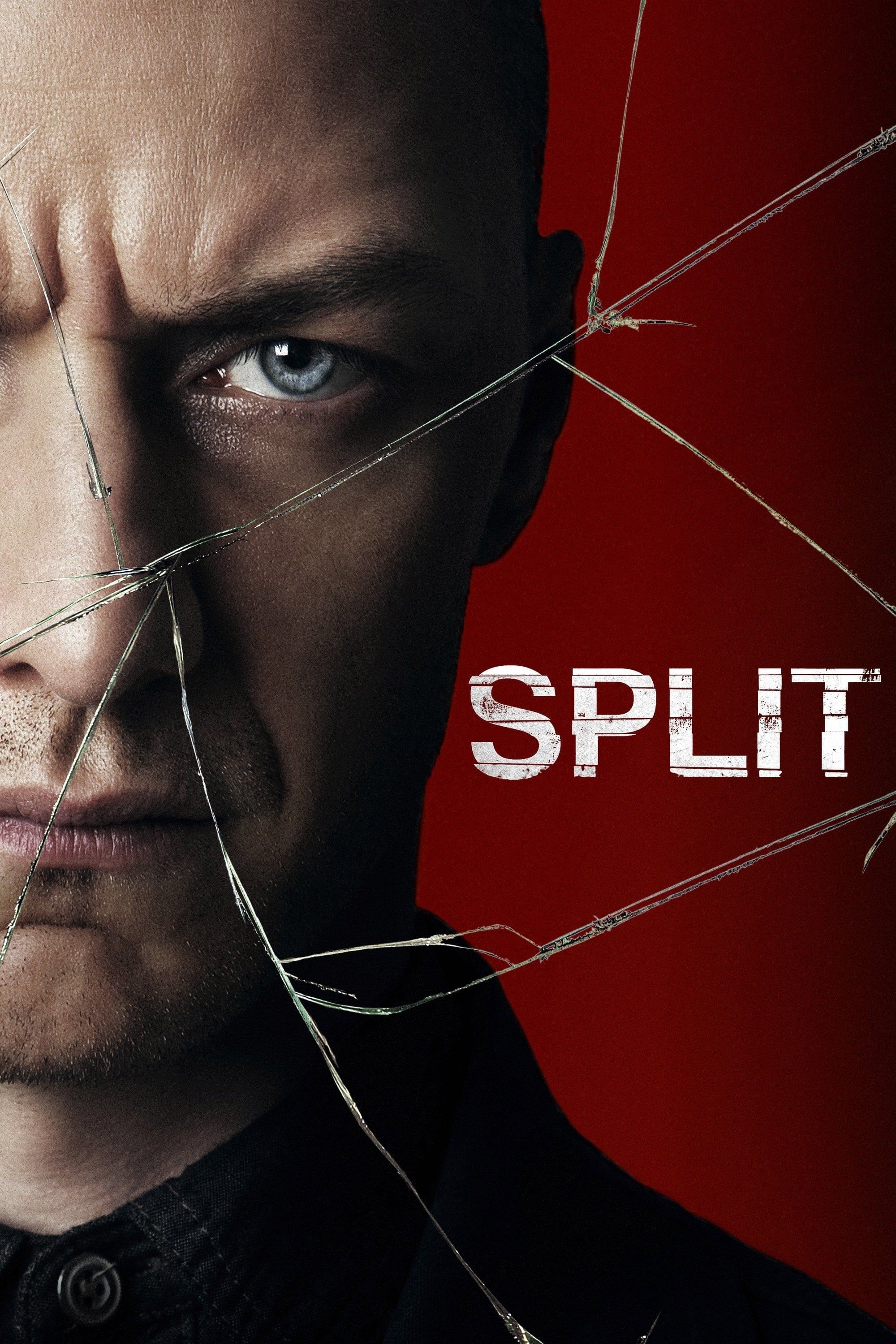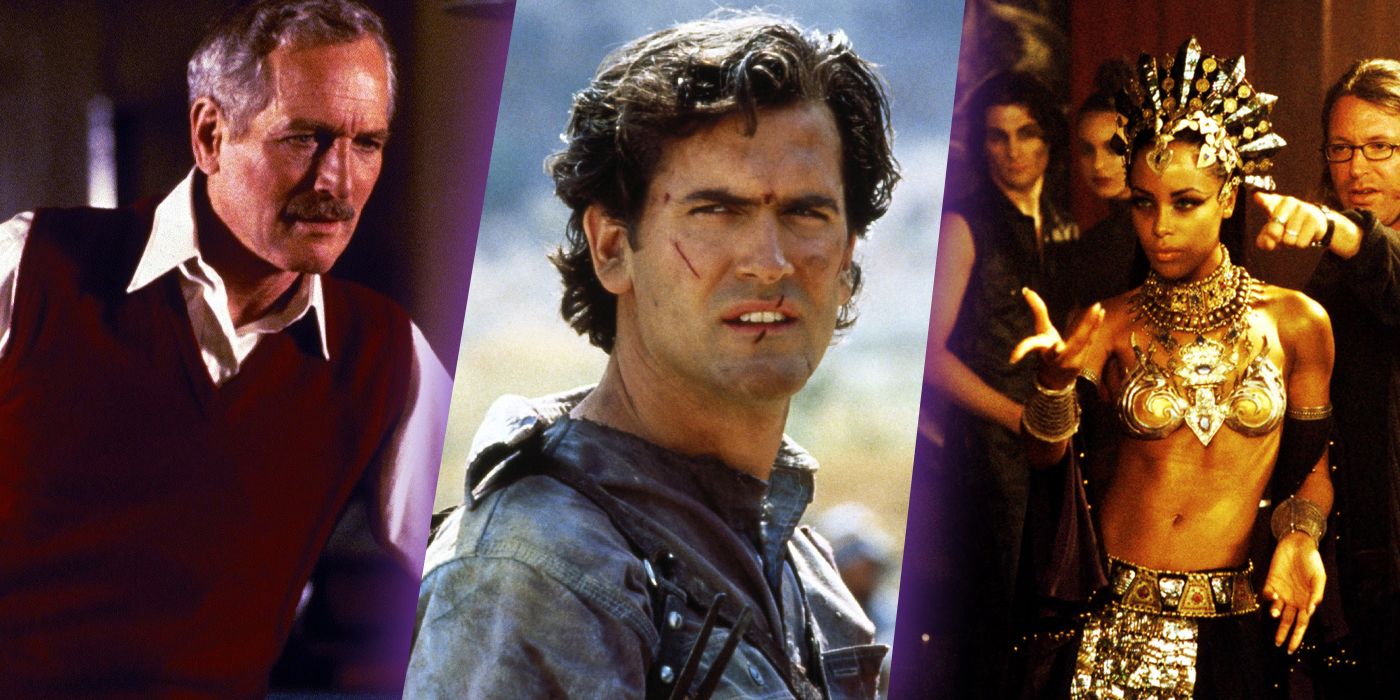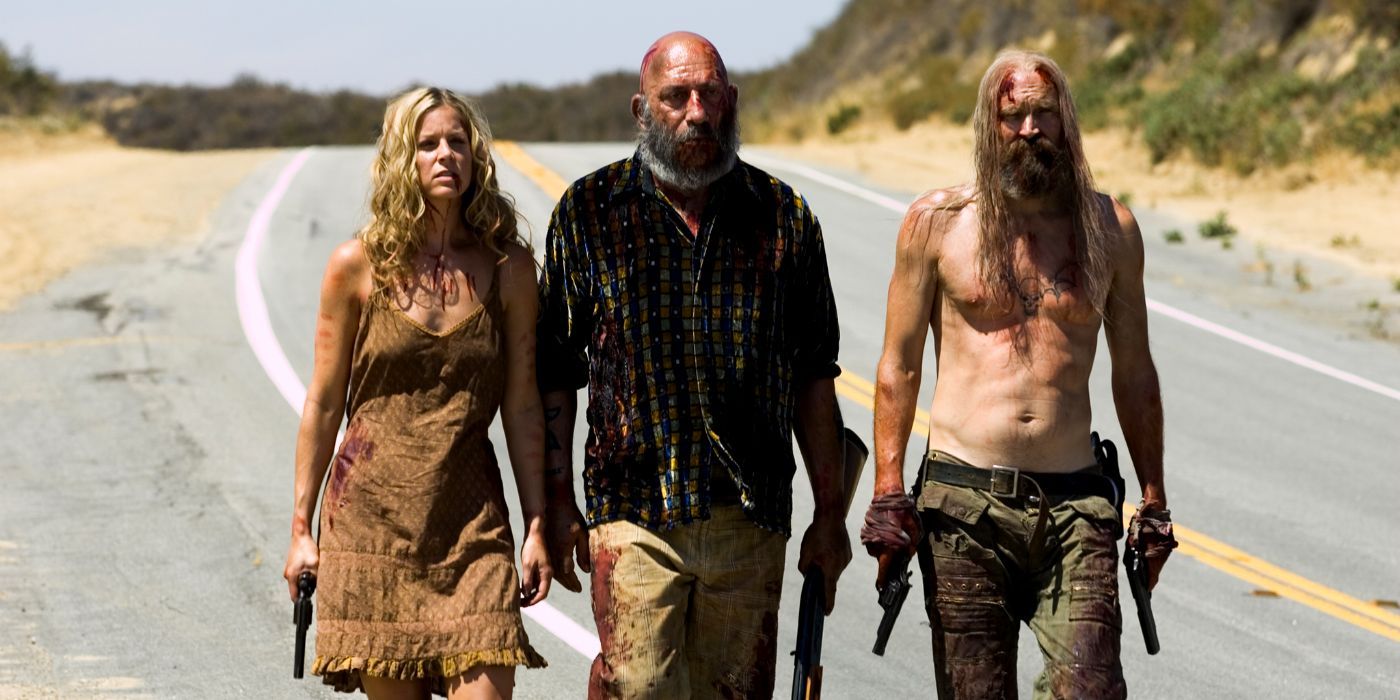Summary
- Not every sequel follows the same tone or style as the original, leading to some unconventional sequels being forgotten over time.
- There are sequels that many people don’t realize are sequels, allowing for new fans to enter a franchise without prior knowledge of previous movies.
- Some sequels, like “Split,” are marketed as original movies but are actually sequels to earlier films, revealing their connection in the final scenes.
Not every sequel picks up from where the previous movies left off, and then there are others that change in tone and style entirely. For this reason, many great and unconventional sequels end up forgotten in time when it comes to a franchise or a revival. There’s also what people like to call a “spiritual sequel,” which evokes the same approach as a previous project, but isn’t necessarily connected to the original story.
Sequels are a delicate subject within the film community because there are many great sequels that nobody asked for, while other highly anticipated sequels turn out to be weak and unoriginal. Alternatively, there are sequels that most people don’t know are sequels that open the door for a new fanbase to get into a franchise or story, especially when it’s possible to follow the plot without prior knowledge of the previous movies. Here are 10 movies you probably didn’t know (or forgot) were sequels.
10 The Color of Money (1986)
The Color of Money is remembered as a unique pupil-versus-master movie, directed by the legendary Martin Scorsese, where veteran pool hustler “Fast Eddie” is forced to play against the prodigy player Vincent Laurie, an ambitious young man he trained before the two had a fall-out.
Released 20 years after The Hustler, few people know that Paul Newman is actually reprising his Fast Eddie role in the film. The 1961 movie directed by Robert Rossen is an account of the rise and fall of his career, depicting how Eddie acquired the strong sense of morality he passes along in the Scorsese sequel. Rent on AppleTV
9 Everybody Wants Some!! (2016)
It would be somewhat pretentious to say that Everybody Wants Some!! and Dazed and Confused are set in the same universe because said universe would be, well, Texas. However, the 2016 film is much more than a spiritual sequel because it connects to the 1993 movie in substance and style while also delivering a clear continuity.
None of the characters from Dazed and Confused return in Everybody Wants Some!!, but the sequel is set in the ’80s and the high school setting gives space to a wilder college scenario. It’s more of an evolution than a transformation, especially when taking into account that the 1993 movie takes place in 1976 and, in the context of Everybody Wants Some!!, all the characters would probably be in college. The same acid humor and high-spirited tone are present in both Linklater comedies, resulting in an excellent double feature. Rent on AppleTV
8 Army of Darkness (1992)
Judging Army of Darkness solely by its title and poster, it’s difficult to imagine it’s a direct sequel to Sam Raimi’s possession B-horror movie, Evil Dead II. In addition, an unsuspecting viewer could easily follow Army of Darkness’ narrative with no prior knowledge of the other movies. That’s because the franchise’s third installment is centered around Ash Williams’ journey, when he’s accidentally transported to 1300 A.D., forced to fight an army of undead soldiers to retrieve the mysterious Necronomicon and return home.
However, there’s a reason for this time-travel turn. Evil Dead II begins in the present — that is, 1982 — but following a powerful incantation, a temporal vortex is opened, drawing not only an ancient demon back to its time, but also Ash and his car. Army of Darkness completely changes the tone of the Evil Dead franchise, leaning more on comedy than horror, which explains why so many people forget it’s actually a sequel. Rent on AppleTV
7 Charlie’s Angels (2000)
Charlie’s Angels feels like the perfect beginning for a franchise, but Cameron Diaz, Drew Barrymore, and Lucy Liu are, in fact, the second generation of private detectives working for a mysterious boss known as Charlie. Before the hit movie directed by McG, there was a Charlie’s Angels TV show that aired from 1976 to 1981 and followed the typical procedural structure of the time.
On the TV show, the three skilled private investigators were originally played by Kate Jackson, Farrah Fawcett, and Jaclyn Smith. The latter reprised her role in a quick cameo in 2019’s Charlie’s Angels reboot, where it is revealed she became the new “Charlie.” Stream on Paramount +
6 Queen of the Damned (2002)
Queen of the Damned follows Lestat, a rock star vampire who awakens the dangerous Queen of the Damned, who wants him for her king. The film’s Gothic, sensual, and sophisticated appeal calls up another well-known vampire story: Interview with a Vampire, starring Brad Pitt and Tom Cruise. Turns out that both movies have much more in common than just their approach and style: Queen of the Damned is a loose sequel to the 1994 film. Fans will also be familiar with the name Lestat, played by Cruise in the first film.
The 2002 movie wasn’t as well-received as its predecessor, but it deserves credit for trying to do something different from the original movie while keeping a similar undertone. Curiously, the book Queen of the Damned isn’t the second in Anne Rice’s “The Vampire Chronicles”: Interview with a Vampire is actually followed by The Vampire Lestat, which is narrated by Lestat. Rent on AppleTV
5 The Endless (2017)
The Endless is already a relatively obscure horror movie, and only horror aficionados will likely be familiar with the entirety of the work of brothers Aaron Moorhead and Justin Benson. Furthermore, the movie operates as a sequel to an even more obscure film directed by the two: Resolution.
Both movies deliver incredible showcases of cosmic horror in a terrifyingly grounded form. Resolution follows two friends, Michael and Chris, isolated in a cabin in the woods in an attempt to make Chris overcome his drug addiction. Meanwhile, The Endless is centered around two brothers who discover that the mysterious cult they fled years ago was actually right. The two movies share the same universe and “entities,” with Michael and Chris returning in The Endless. Stream on Peacock or Roku
4 The Devil’s Rejects (2005)
The Devil’s Rejects represents that rare case in which a sequel that people didn’t know was a sequel makes more money than the first film. This popular road-horror movie, directed by the celebrated Rob Zombie, revolves around a family of maniacs on the run after an ambush from the police.
Viewers get to see the Firefly family terrorizing the roads of Texas, but the heinous acts they committed in the past are merely implied. The movie is a sequel to House of 1000 Corpses, where audiences can have a pretty good idea of what caused the Firefly family to be pursued by the police. The Devil’s Rejects was an immediate success, establishing Zombie as one of the best horror directors of his generation and turning the previous movie into a cult classic.
3 21 Jump Street (2012)
It’s a well-known fact that the crime comedy 21 Jump Street is loosely based on a TV show of the same name, which aired from 1987 to 1991. However, only fans of the show will be able to notice that the film is actually a sequel to the series. The movie follows an eccentric cop duo assigned to infiltrate a high school drug ring while disguising themselves as teenagers.
On the other hand, the TV show 21 Jump Street was a fairly serious crime drama focused on an undercover police unit specialized in youth crime. On the surface, only the show’s premise is adapted to the big screen, but the film’s final moments deliver a welcoming surprise as the show’s stars, Peter DeLuise and Johnny Depp, return to reprise their roles. The hilarious cameo gives an end to the arc of the TV characters. Stream on Hulu
2 2046 (2004)
“Are you still in the mood for love?” asks the tagline of Wong Kar-wai’s sci-fi drama, 2046, which works as much more than just a spiritual sequel to one of the best romantic movies of all time, In the Mood for Love, released in 2000. The first movie follows two strangers who live in the same building and form an unusual bond upon discovering their respective partners had an affair with each other.
While In the Mood for Love is a romance grounded in reality, 2046 delivers a sci-fi narrative where the line between reality and fiction is blurred from the get-go. The film follows an author tormented by the loss of his one true love. The author is none other than Chow Mo-wan, the male protagonist of In the Mood for Love, and 2046 is all about the consequences of his unconsummated affair with Su Li-zhen. She, in turn, is the female protagonist of In the Mood for Love and the main character of Days of Being Wild, regarded as the first movie of this unusual trilogy. Rent on Prime Video
1 Split (2016)


Split
- Release Date
- November 15, 2016
- Cast
- James McAvoy , Sebastian Arcelus , Ameerah Briggs , Betty Buckley , Izzie Coffey , Nakia Dillard
- Rating
- PG-13
- Runtime
- 116
Known for his mind-blowing plot twists in fiction, M. Night Shyamalan decided to do what he does best, this time in real life, by shocking fans with the revelation that Split is a sequel to his 2000 movie Unbreakable, which offers an unconventional take on what it means to be a superhero. However, aiming at commercial success, Split was marketed as an original movie about three young women trying to escape a man with 23 distinct personalities.
The strategy makes sense, given the big twist about the movie being a sequel is only disclosed in the very last scene and anyone could understand Split without watching Unbreakable. However, watching both movies is a must when it comes to Split‘s sequel, Glass, which brings together both universes and their respective characters. Rent on AppleTV
This story originally appeared on Movieweb



